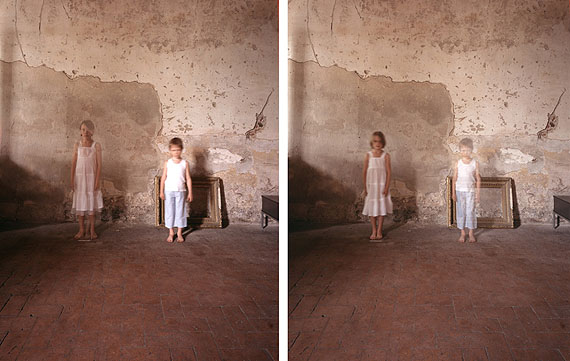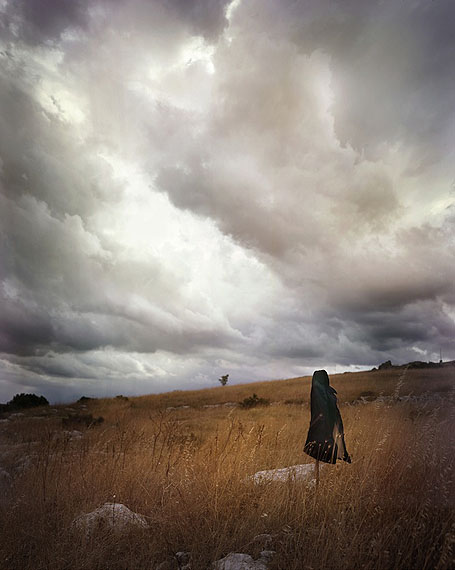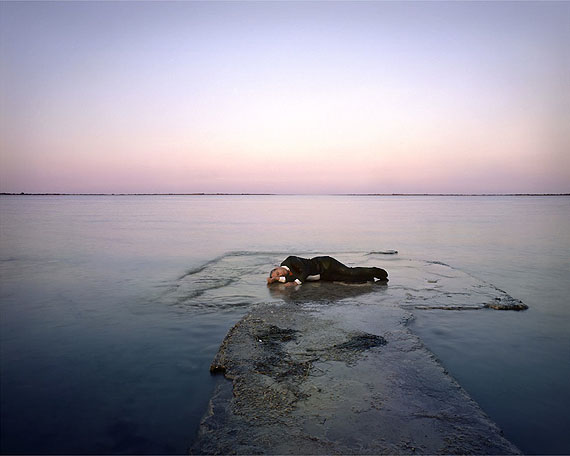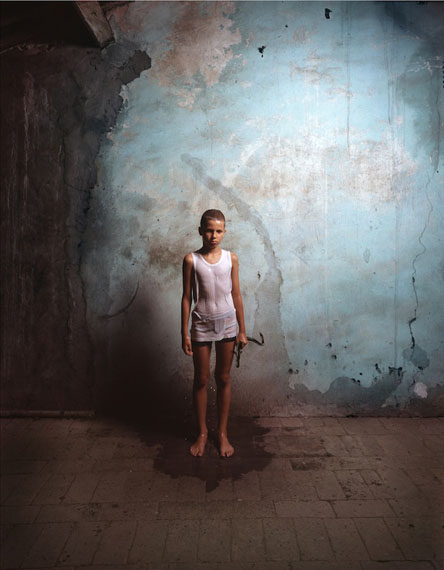
Nicola Vinci »
Exhibition: 12 Apr – 13 Jul 2012
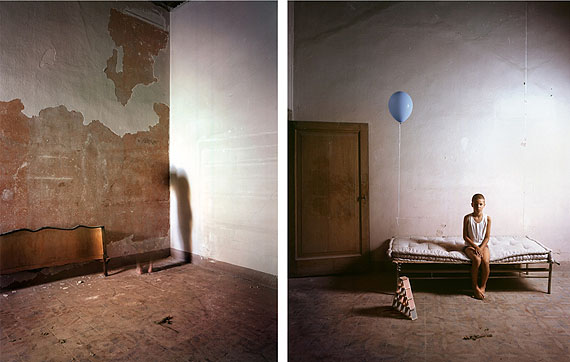
Nicola Vinci
April 12 – July 13, 2012
"The greatest mystery is not that we have been flung at random between this profusion of matter and the stars, but that within this prison we can draw from ourselves images powerful enough to deny our nothingness." Andre Malraux, Les Noyers de l'Altenburg (1948)
Ortega y Gasset, 1914, suggested that we must always define human existence as a combination of the individual person and the concrete circumstances of his life: "Yo soy yo y mis circunstancias" ("I am myself and my circumstances"). It is this existentialist concept that resonates throughout Nicola Vinci’s current work. With communication, human relationships and latent religious symbolism at its heart, Vinci focuses his lens on the emotions that emerge over time, seeking the vibration of the late nineteenth century, where people were portrayed in enclosed spaces and stillness and intensity of concentration were paramount. With saturated colors and soft, ambient light, Vinci produces a vividly evocative and painterly quality that expresses his vision of the human condition and the relationship between space and the intimacy of the person. Using diptych throughout the series Vinci references the early means of sending messages, thereby reinforcing the idea of two images and two visions as a means of communicating his ideas. His inspirations are varied - his travels, teaching, everyday life - and suggest ideas, thoughts and emotions: “who has lived the last emotions that are closed between those walls…. memories, fingerprints, stains.”
Once likening his work to “an unsettling scratch on the skin” Vinci does not shy away from controversy or criticism as he seeks to unmask the self. The person is always the center of his attention, whether in embodiment or suggestion, and using children as a means of observing the mystery of the human reaction can, at times, be a discomforting experience. Vinci is still clearly influenced by psychoanalyst, D.W. Winnicott’s idea of true self – the sense of being alive and real in one’s own body, and false self – an internal construction of self created in childhood as a defense against an unsafe or overwhelming environment. Works like Venerdi santo (Good Friday) and Il castello di carte (house of cards) bring Vinci’s young son’s face into sharp focus- showing eyes and expressions that reflect an innocent directness, devoid of the joy and wonder so often associated with childish faces, at once challenging and confronting. The sense of loneliness and fragility of this series lends poignancy and potency to an ostensibly simple domestic scene.
In his previous series, Portraits, diptychs showed the same subject but with slight alterations to expression or attitude to demonstrate a differing temporal space and the subtle nature of change. While the use of diptych to represent the two sides of self remain central to his work, Vinci’s current project communicates this theme by experimenting with the shadowy form to represent the other self within us. In works such as Riquadro (Box) and Sotto la nuvolo (Under the cloud) childish faces are blurred, obfuscating the expression and directing attention onto the domestic environment - flowers, a broom, a picture frame. The sense of shifting selves is expressed through the wraith like images that share space with their more corporeal representations.
However, not all of Vinci’s photographs depict enclosed spaces and human subjects. The series, Transfer, focuses on the dramatically ominous environment of a windswept field and burgeoning storm clouds. A dynamic juxtaposition of landscape and scattered clues relating to human occupancy hint at personal tragedy such as experienced by Antonin Artaud, Pontius Pilate and Bartolomeu Dias. The fluttering blue shirt in Fede (Faith) could be a scarecrow or is it a marker? Is it there to repel or protect? Who was here? What befell them? Why did they leave? Unanswered questions leave a feeling of disquiet in the face of a menacing landscape.
Vinci takes another direction with his works Icaro and Le luce dell’alba. Icaro (Icarus) shows a bare and brutally scarred back displayed in sharp relief. His surgical scars are reminiscent of wings that have been viciously ripped from their base. The second photograph in the series Le luce dell’alba (The light of dawn) continues the narrative with Icarus fallen to earth. Torn, broken, washed up on the shore like a piece of detritus, this is a metaphor for life met with tragedy, but, as lucent dawn breaks, can the self survive the circumstance? The existential question remains.
Nicola Vinci (1975) lives and works in Verona, Italy and graduated from the Academie des Beaux-Arts, Bari. He has exhibited in Italy, South Africa, China and the USA and has work in the permanent collection of the Museum Contemporary Art in Verona.Vinci has been published in EYEMAZING, Flash Art and many others. In 2005 and 2007 he was the winner of the Celeste Award for Photography, a prestigious, international contemporary art prize.
